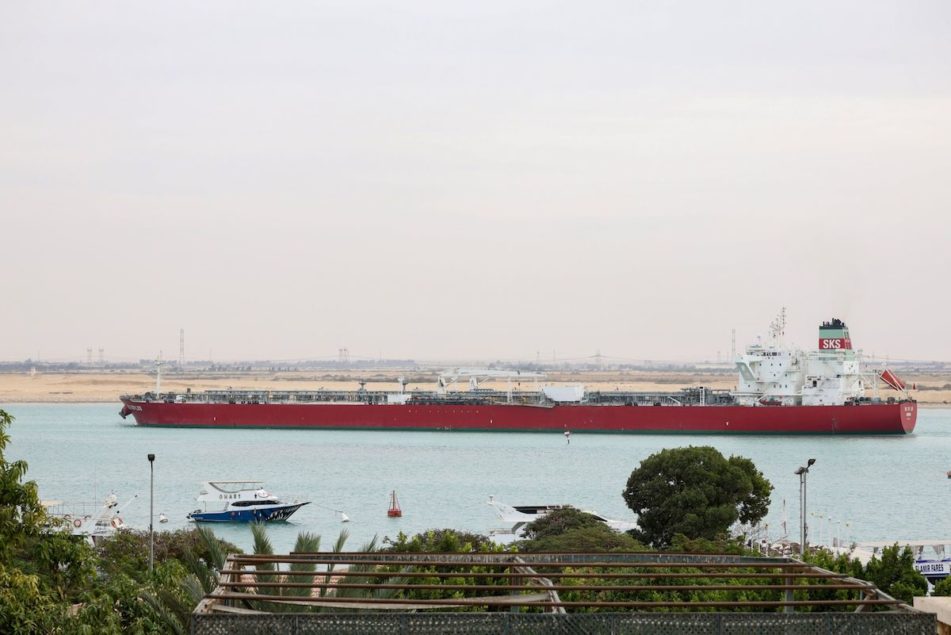
Attacks by Houthi militants on merchant shipping are boosting the price of diesel fuel in Europe.
Since the start of 2024, the wholesale cost of fuel delivered to northwest Europe has jumped by 12% to just over $116 a barrel, according to figures from the General Index compiled by Bloomberg. Red Sea trade disruption isn’t the only factor, but a hike in freight costs due to Houthi attacks is contributing.
“They are forcing a redirection of ships, forcing them onto longer voyage times, and hence higher import costs,” said Eugene Lindell, the head of refined products at consultancy FGE. While some vessels are still taking the Red Sea route, they will have to pay higher insurance costs, he added.
Europe’s oil refineries don’t make enough diesel-type fuel to meet demand and so the region relies on imports, many of which come from the Middle East and India.
That supply line has become even more important since sanctions banned diesel imports from Russia following its invasion of Ukraine.
Read more: Qatar Delays LNG Cargoes to South Europe Amid Red Sea Crisis
The easiest way for Middle Eastern Gulf and Indian cargoes to reach Europe is to sail through the Red Sea and then the Suez Canal. But many companies are now avoiding the route because of Houthi attacks, including a missile strike on an oil tanker last week. Multiple vessels are now sailing around South Africa’s Cape of Good Hope.
Diesel is also linked to the price of crude oil, which has also been getting more expensive as traders fret about rising tensions in the Middle East and as tankers divert. But the gains in the price of the fuel have outstripped those of crude.
Outages at refineries in Europe — some planned, some unplanned — can also curb diesel supply, further supporting prices.
Recent drone attacks on Russian energy facilities are also a supply risk. Even though Europe no longer relies directly on that country’s barrels, the diesel market is global, so if output is reduced in one area, the upward pressure feeds through into the wider market.
- SEO Powered Content & PR Distribution. Get Amplified Today.
- PlatoData.Network Vertical Generative Ai. Empower Yourself. Access Here.
- PlatoAiStream. Web3 Intelligence. Knowledge Amplified. Access Here.
- PlatoESG. Carbon, CleanTech, Energy, Environment, Solar, Waste Management. Access Here.
- PlatoHealth. Biotech and Clinical Trials Intelligence. Access Here.
- Source: https://www.supplychainbrain.com/articles/38993-the-price-of-diesel-in-europe-is-being-boosted-by-red-sea-shipping-chaos



